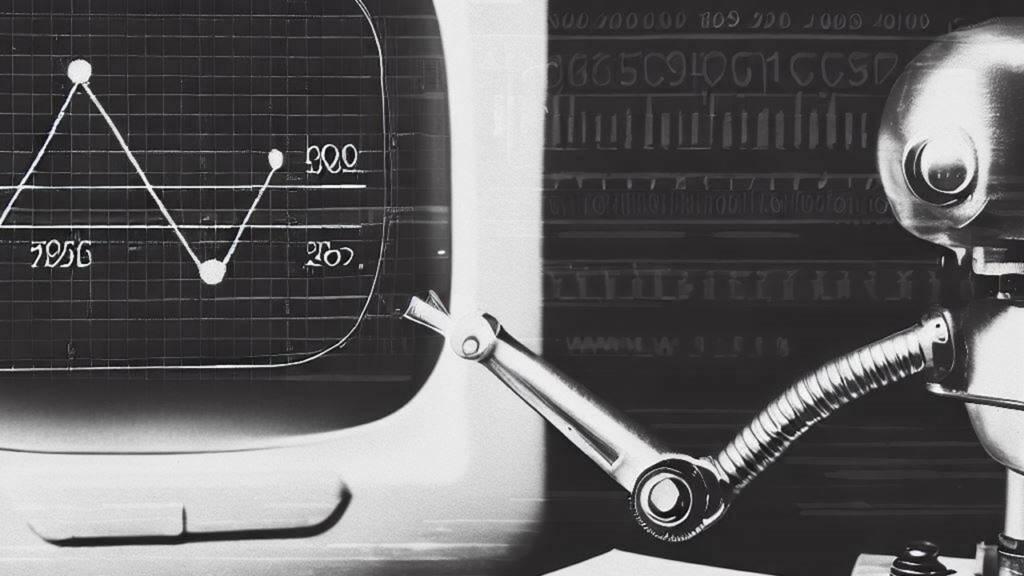Artificial intelligence may seem like a new technology at times. Furthermore, its widespread adoption occurred only over the past few years, right? The truth is that the first steps toward AI were taken in the early 20th century. Although real progress wasn’t made until the ’50s, it couldn’t have happened without the efforts of pioneers in various sectors.
Understanding the present state of AI technology and its potential future development requires some familiarity with its past. This article will show you that AI is nothing new, especially in America.
The Early Years of Artificial Intelligence, 1950–1956
The peak of public curiosity about artificial intelligence occurred around this period. Originally published as ‘Computer Machinery and Intelligence’ in 1950, Alan Turing’s seminal work ultimately gave rise to the Turing Test for artificial intelligence. The phrase ‘artificial intelligence’ was created and spread into common usage.
AI In America: Where Did It Come From?
John McCarthy is considered a prominent figure in the field of Artificial Intelligence and Computer Science, earning him the title of the “father of AI.” His significant contributions have solidified his status as one of the most influential inventors in this domain.
The phrase “Artificial Intelligence” was first introduced by McCarthy in the mid-1950s, whereby he defined it as “the field of study and application of creating intelligent machines through scientific and engineering principles.”
Developments Between 1970s to 1980s
Due to computational and memory constraints, as well as the inherent difficulty of the problem, artificial general intelligence remained a long way off. When governments and businesses stopped funding AI development, the field went dormant from 1974 to 1980, termed the first ‘AI Winter.’
A second wave of artificial intelligence interest was started in the 1980s by studies of deep learning methods and the widespread implementation of the American Edward Feigenbaum’s expertise systems in the industry, only to fade out as funding dried up.
Developments Of AI In The US From 2012
Services and goods that have influenced modern life were made possible by developments in fields such as deep learning, machine learning, natural language processing, computer vision, and speech detection. Other developments made possible by the US towards AI include:
2012: The Google researchers Jeff Dean (an American) and Andrew Ng used unlabeled photos of cats to teach their neural network to distinguish the species.
2016: Hanson Robotics, founded by the American David Hanson, developed a humanoid robot called Sophia. She gained recognition as the inaugural “robot citizen” and was the pioneering creation to possess a lifelike human look, visual perception, emotional replication, and communicative capabilities.
2017: Facebook, headquartered in California, trained two AI chatbots to converse and gain negotiation skills. During their dialogue, the bots spontaneously abandoned English to create their language.
Where Is Artificial Intelligence Applied?
AI today is applicable in various sectors, such as:
-
Research and Development
The US is at the forefront of AI technology right now because of the massive investments made by big tech firms in research and development. AI here can analyze data, accelerate innovation, and experiment with design.
-
Gaming
Artificial Intelligence in gaming describes interactive and personalized gameplay. Typically, NPCs that exhibit intelligence or creativity, as if under the command of a real-life game player, are responsible for generating these AI-powered immersive adventures.
Enhancing the gaming experience is the primary goal of AI, even in card games. In poker, for instance, AI betters the gameplay by analyzing a player’s patterns, studying past moves while predicting future ones, and suggesting possible strategies. As reported on https://www.tightpoker.com, AI had even won against poker pros during a tournament set up by the Carnegie Mellon University back in 2017, proving its potential in the gaming industry.
There is now more variety in gaming options than ever before. Instead, American players now have access to various wearable and mobile gadgets, from smartphones to virtual reality headsets and more, on which to enjoy their games. Artificial intelligence allows designers, mostly situated in the US, to create portable games that are otherwise only available on consoles.
-
Financial Institutions
Chatbots have proven an effective tool for American banks to inform clients about available services and process transactions that do not necessitate human interaction. AI is applicable in financial trading in the US stock market.
Conclusion
Even though 1956 marked the beginning of the contemporary area of artificial intelligence in America, it required decades of hard labor to make substantial advancements toward establishing an artificial intelligence system and rendering it an operational reality. Rapid progress is being made in artificial intelligence because computers can crunch massive volumes of data and anticipate outcomes with greater precision than humans can.
